#Portable Audio Codecs
Explore tagged Tumblr posts
Text
Windows Media Player Features You Might Not Know About
Windows Media Player (WMP) is a media player and media library application advanced with the aid of Microsoft for Windows working structures. It was first brought in 1991 as part of the Windows 3. Zero bundles and has advanced considerably. WMP has long been a key feature of Windows, permitting users to play audio and video files, arrange their media libraries, and even burn CDs and DVDs. Despite the upward thrust of 0.33-celebration media gamers and streaming offerings, Windows Media Player remains a flexible tool for lots of users. This article offers an in-depth look at WMP's features, its evolution, and its region within the modern multimedia landscape.

History and Evolution of Windows Media Player
Windows Media Player has passed through widespread modifications since its inception. The first model is Windows Media Player 1. Zero turned into a fundamental media participant that supported the best audio documents, in particular the. Wav format. With every new version, Microsoft delivered new features and more advantageous WMP talents to address diverse audio and video codecs, in addition to combining with online offerings.
Windows Media Player 6. Zero (launched in 1996) became an enormous milestone, introducing support for extra formats. MP3 and . Avi, alongside a person-pleasant interface. Over the years, Windows Media Player has become an extra fundamental part of the Windows working gadget, with features inclusive of the potential to tear CDs, synchronize with portable gadgets, and access streaming media.
The launch of Windows Media Player Nine in 2003 marked any other principal update, bringing assistance for new media codecs (including Windows Media Audio and Windows Media Video) and a revamped interface. This version also delivered the potential to play DVDs and the combination of the Windows Media Player library, which allowed users to organize and tag their media files.
By the time Windows Media Player 11 was launched in 2006 as part of Windows Vista, it featured a wholly redesigned interface with higher multimedia management tools, progressed support for mobile gadgets, and integrated media sharing across a community. This version also added a "Library" tab, in which users should prepare and manage their media content material greater without problems.
However, with the upward push of alternatives like iTunes, and VLC, and the growing recognition of streaming offerings which includes Spotify and YouTube, Microsoft regularly decreased its awareness of Windows Media Player. Windows Media Player 12, released with Windows 7 in 2009, changed into one of the remaining foremost updates. While it improved assistance for current video and audio codecs, together with high-definition (HD) video, it additionally began to show signs of getting older in evaluation to more present-day media consumption platforms.
Despite its reducing prominence in the desire for apps like Groove Music and Movies & TV, Windows Media Player continues to be included in Windows running structures for customers who choose neighborhood media playback.
Key Features of Windows Media Player
Media Playback Windows Media Player’s number one characteristic is playing multimedia documents, and it supports a huge variety of codecs, which include MP3, WMA (Windows Media Audio), WMV (Windows Media Video), AVI, MP4, and more. While its support for a few non-local formats (like FLAC) is restricted, it can nonetheless deal with a maximum of the popular audio and video document sorts. The player’s integrated formats frequently permit customers to enjoy media without needing to download additional software programs or plugins.
Media Library Management One of the maximum beneficial functions of Windows Media Player is its capacity to organize and manage media libraries. The library organizes all media files into categories which include tracks, movies, and playlists. It presents equipment to sort, clear out, and look for files based totally on metadata like song name, artist, album, and style. Users also can create custom playlists and synchronize their media through more than one gadget.
CD and DVD Support Windows Media Player gives strong assist for optical media. Users can rip (extract) audio from CDs into numerous formats like MP3 or WMA. It also permits customers to burn their favorite tracks to CD or DVD. Additionally, it has the capacity to play DVDs and Blu-ray discs, imparting complete-featured controls together with subtitle options, chapters, and menus.
Syncing with Portable Devices Windows Media Player has traditionally been one of the go-to solutions for syncing media between a pc and transportable gadgets, including MP3 gamers and smartphones. Although 1/3-celebration apps like iTunes or Google Play Music have in large part overtaken this capability, WMP still allows users to sync content material among their PCs and compatible gadgets.
Streaming Media Windows Media Player helps streaming from online resources. It can connect with net radio stations, podcasts, or even positive video streaming services that use Windows Media streaming protocols. However, this selection has come to be much less relevant as services like YouTube and Spotify offer extra robust streaming structures.
Visualizations WMP comes with many visualizations, which might be dynamic animations that respond to the song being performed. These are in basic terms aesthetic however beautify the enjoyment for customers who revel in accompanying visuals at the same time as being attentive to the song. There is a variety of pre-established visualizations, and users can download additional ones.
Equalizer and Audio Enhancements The participant features an included equalizer that permits users to regulate the sound output consistent with their alternatives. Audio enhancements together with surround sound, bass enhancement, and balance controls offer in additional customization for the listening revels in.
Windows Media Player Inside the Modern Era
While Windows Media Player turned into as soon as the cross-to solution for many customers looking to control their media, it has increasingly been overshadowed by way of more modern technologies and services. In precise, streaming offerings like Spotify, Apple Music, and YouTube have dramatically altered the way human beings get the right of entry to and devour track and video content. Many users now decide upon the benefit and expansive catalog of these structures over dealing with local media documents.
Microsoft itself has shifted its consciousness toward extra-current apps like Groove Music for music playback and Movies & TV for video content material. These apps are more tightly included with the cloud, taking into consideration a better revel in whilst gaining access to content material throughout more than one gadgets. Additionally, Microsoft Store apps have ended up a larger part of the ecosystem, permitting customers to download devoted third-birthday party gamers, like VLC, which gives a much better set of capabilities than WMP.
Despite this, Windows Media Player remains a useful tool for users who opt for traditional, offline media control. It still works nicely for users who've huge neighborhood libraries of tune, films, or domestic films and prefer not to rely upon cloud-based total offerings.
Alternatives to Windows Media Player
While WMP remains functional, numerous alternatives have emerged over the years.
VLC Media Player: One of the most famous unfastened media players available, VLC supports clearly every document layout. It’s a versatile, open-source tool that gives a lot more customization and capability in comparison to Windows Media Player.
ITunes: Especially famous within the Apple surroundings, iTunes provides robust media management capabilities for tracks, podcasts, and movies. It additionally serves as the platform for syncing content material to Apple devices.
Spotify: For streaming music, Spotify has become the move-to platform for millions. With get right of entry to to an extensive library, personalized playlists, and offline listening, Spotify has revolutionized how human beings concentrate on tuning.
Foobar2000: An exceptionally customizable audio player for advanced users, Foobar2000 offers several functions no longer found in Windows Media Player, including lossless audio aid and a minimalist interface.
Plex: Plex is another popular device for coping with a personal media server. While it has greater of a focus on organizing media libraries and streaming to diverse devices, it could serve as a viable opportunity for WMP for superior media control.
2 notes
·
View notes
Text
An ode to the iRiver iHP-120
For whatever reason, I've found myself deeply nostalgic for high school as of late. And for me, that is intractable from nostalgia for what is perhaps the peak mp3 player ever made:
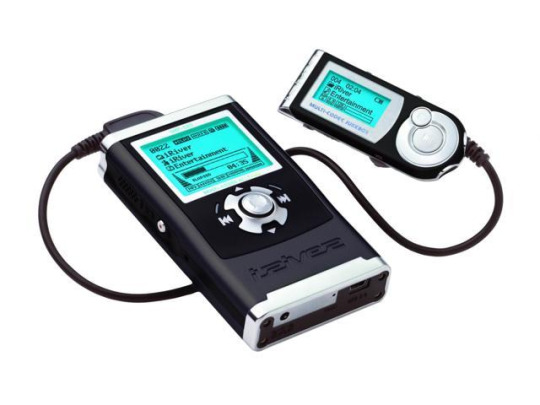
The iRiver iHP-120 was released in 2003, my sophomore year of high school, and it changed my life. This thing held an astounding 10GB of music—for comparison, most mp3 players at the time were flash based, and held 128 or 256 MB of music. The only big competitor at the time was the 1st generation iPod, a mac-exclusive device that transferred data over firewire and had to be synced using the fledgling iTunes. Juxtapose that to iRiver, who took what I like to call the "we don't give a fuck" approach:
When you plugged in the iHP-120 with USB 2.0, it just showed up as an external hard drive—you could throw whatever you wanted on there. Naturally, it could read mp3 files, but this thing introduced me to the world of audio codecs and processing in a way nothing could have prepared me. WMA files worked fine (a big deal at the time because of DRM issues, during the heyday of KaZaA and Limewire). You want to play uncompressed .WAV files? No problem, put them on there. FLAC files? Absolutely, let your audiophile freak flag fly. Fucking OGG Vorbis files played on this thing. Hell, you could put text files on here and read them.
(The firmware for these was also basically open-source, and people did even crazier stuff with them. By the time I retired my player, it could do gapless playback, crossfading, 10-band equalizing, normalization and more. I think I also changed the boot screen to a picture of Sailor Moon.)
But the magic didn't end at uploading music to the iHP-120—controlling this thing was more intuitive than any other device around at the time. All of your music was displayed on the player in whatever folder structure you loaded onto the device—navigating the music was as simple as using Windows Explorer. You had your standard play/pause, skip forward/back and volume controls on the front joystick, but what are the other buttons for?
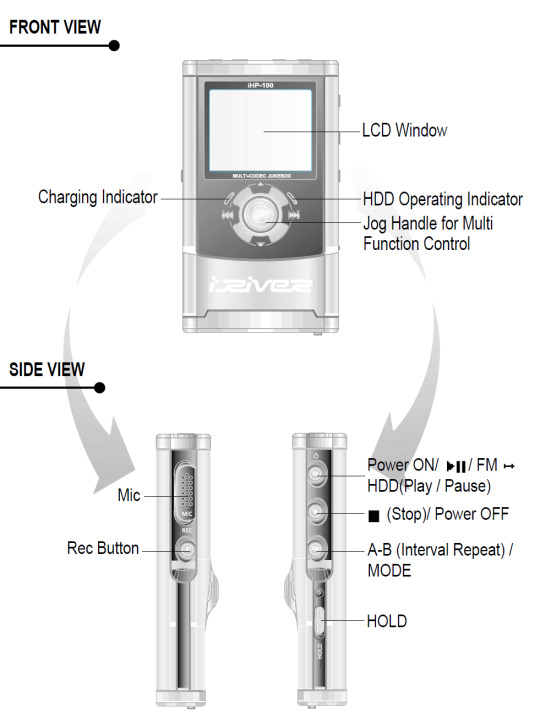
Yeah. This thing was also a portable recorder. At anytime you could just hold down the Rec button and start recording with the onboard mic, or using an external input (more on that later). On the right side, an A-B Interval control. You ever wanted to just listen to one part of a song on repeat to learn the lyrics? Just hold down the button. Lastly a hold switch to disable control inputs while it was in your pocket—no accidentally pausing the music.
Okay, back to the external input mentioned before. The top of the iHP-120 is wild.
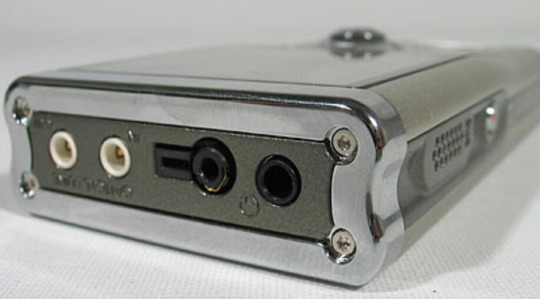
The top I/O panel of the iRiver iHP-120, with 4 jacks.
From right to left, you have a 3.5mm headphone jack (naturally), a 2.5mm microphone jack, the remote control port (more on this in a bit), and in white you have Line In/Out jacks which you could use to record as well as just plug in a second pair of headphones for a friend—jacks which support both 3.5mm analog input, as well as 3.5mm TOSLINK optical cables.

The TOSLINK 3.5mm male plug. A plug I only ever encountered on this device and the Sound Blaster X-Fi Titanium, a sound card I wrote a review of in 2009 which seems to still be up at PC Gamer and reading it now I don't know how any of my writing was ever published, let alone in print.
Chances are good you've never encountered this, it's phenomenally uncommon, and TOSLINK as a whole largely died with the emergence of HDMI—but this fucking mp3 player could both record and transmit fiber optic audio in uncompressed stereo or lossy 7.1 surround sound. In high school, I would plug the iHP-120 into our home theatre and listened to Porcupine Tree's Stupid Dream on repeat (side tangent, I'm pretty sad 5.1 album recording never really caught on, but the Dolby Atmos music format is better in every way, and I'm grateful Apple is bringing it into the mainstream).
"Okay, so we have an music player/text reader/voice recorder with optical audio, and basically every codec under the sun, what else could you go on about Erika?"
-you, the person reading this
THE REMOTE
Let me take you back to 2003. I was a depressed theatre kid teenager who would listen to Rooney on repeat on my Koss UR40s while crying over a girl who wanted nothing to do with me.
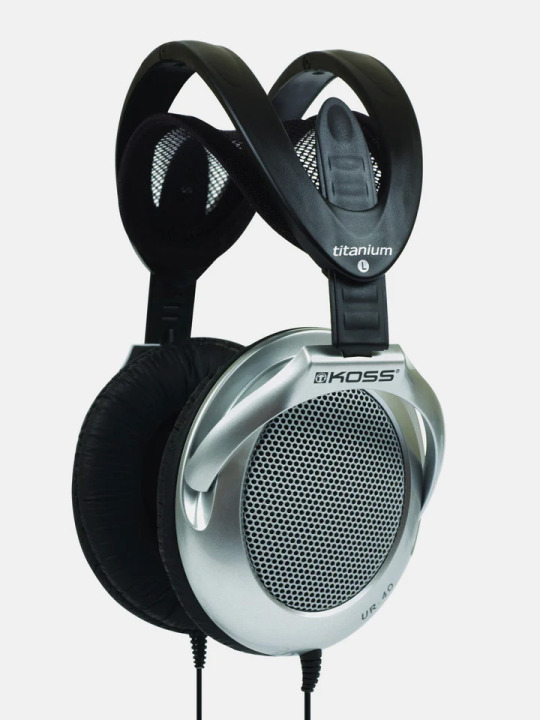
The Koss UR40 Headphones I wore like a fashion accessory everyday.
The other thing I wore everyday besides those headphones? Baggy cargo pants (it was acceptable at the time, I swear). Inside the right cargo pocket was my iRiver iHP-120, and clipped to the velcro flap of that cargo pocket was the iHP-115R remote control.
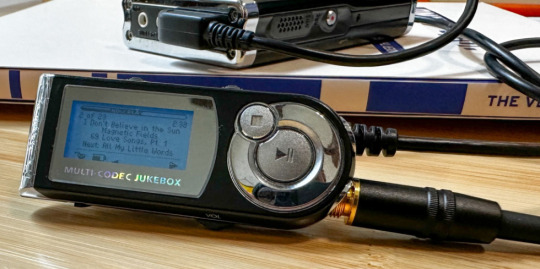
The iHP-120 remote unit
Every function of the iHP-120 could be controlled from this little fucker. Play/pause and stop buttons. Volume, skip track and recording are all here on rocker switches. You could even change the fucking bitrate of playback on this little thing, all without taking the actual mp3 player out of your pocket because the LCD screen on the remote has all the same info you'd get on the main unit.
The remote itself connected to the iRiver with that big plug you can see in the picture above (shamelessly stolen from Nathan Edwards who I worked with at PC Gamer in the late 2000s and only while writing this post discovered has already written a much more professional ode to the beauty of the iHP-120 this year).
You would plug your headphones into the remote, (or in my case you could also plug in your 1988 Chevrolet 2500 suburban's tape deck adaptor and have controls at your fingertips. No more distracted driving).

An image of a 1988 Chevorlet 2500 diesel Suburban. Not super relevant but god I miss my high school suburban. We would take the rear and middle benches out and put a queen-size mattress in the back, which 9 of my friends would ride on as we went to Little Caesar's for lunch. Also, cars just looked way fucking better back then.
I think I'm about done waxing nostalgic, but I really do miss the days of discrete devices—I kind of find myself fighting back against my smartphone. I have a camera I carry around, a pen and paper planner and writing notebook, and a kindle for reading. There's something appealing about not having my phone be my access to music either—rather, having a device that I just threw my music on and it plays it really well was rad. The iHP-120 was really fucking rad.
12 notes
·
View notes
Text
Demystifying Digital Images and Video: Formats, Tools, Copyright, and More.
Introduction
In today's digital age, images and videos have become an integral part of our daily lives. From personal photographs shared on social media to professional content uploaded on platforms like YouTube and Twitch, understanding the intricacies of image and video file formats, codecs, and manipulation tools is essential. This blog post aims to provide a comprehensive overview of these digital elements, focusing on the definitions of common file types, export settings for popular broadcasting platforms, image manipulation tools, and the critical aspects of image copyright.
Definitions of Commonly Used Image and Web Video Formats, Wrappers, and Codecs
Image Formats:
JPEG (Joint Photographic Experts Group): JPEG is the most widely used image format for photographs and digital images. It uses lossy compression, which reduces file size while maintaining reasonable image quality.
PNG (Portable Network Graphics): PNG is preferred for images with transparent backgrounds or crisp, high-quality graphics. Unlike JPEG, it uses lossless compression.
GIF (Graphics Interchange Format): GIFs are a popular choice for short, looping animations and simple graphics. They use lossless compression and support transparency.
TIFF (Tagged Image File Format): TIFF is a versatile format commonly used in professional photography and graphic design. It supports lossless compression and maintains high image quality.
BMP (Bitmap): BMP is a Windows-native format known for its lack of compression. It results in large file sizes but retains image quality.
Video Formats and Codecs:
MP4 (MPEG-4): MP4 is a widely supported video format that uses the H.264 codec. It offers a balance between quality and file size, making it ideal for streaming and sharing on the web.
AVI (Audio Video Interleave): AVI is an older format that supports various codecs. It is not as efficient as MP4 in terms of compression and is used less frequently nowadays.
MOV (QuickTime Movie): MOV is a format developed by Apple and is popular among Mac users. It can use various codecs, such as H.264 and ProRes, for high-quality video.
MKV (Matroska): MKV is an open-source container format that can contain videos with a variety of codecs, making it highly customizable.
Export Settings for Popular Broadcast Platforms
When it comes to sharing images and videos on popular broadcasting platforms like YouTube, Twitch, and Facebook, selecting the right export settings is crucial for optimal quality and compatibility.
YouTube: For video content on YouTube, the recommended format is MP4 with H.264 video codec and AAC audio codec. The ideal resolution is 1080p (1920x1080) or 4K (3840x2160) for higher quality. These settings balance quality and compatibility across devices.
Twitch: Twitch also prefers the MP4 format with H.264 video and AAC audio codecs. A resolution of 720p (1280x720) or 1080p is recommended, depending on the viewer's internet speed and quality preferences.
Facebook: Facebook accepts a wide range of video formats, including MP4 and MOV. However, MP4 with H.264 video and AAC audio codecs is a reliable choice. The resolution should be adapted to the target audience and device capabilities.
Commonly Used Image Manipulation Tools and Techniques
Image manipulation tools are essential for enhancing and editing images. Here are some commonly used tools and techniques, along with their purposes:
Adobe Photoshop: Photoshop is a versatile image editing software that can be used for tasks like retouching, color correction, and compositing.
Adobe Lightroom: Lightroom is perfect for photo organization and enhancement, with features like exposure adjustment, color grading, and batch processing.
GIMP (GNU Image Manipulation Program): GIMP is a free alternative to Photoshop, offering similar features for image editing and manipulation.
Canva: Canva is a user-friendly online tool for creating graphics and social media content. It simplifies design tasks for non-designers.
Cropping and Resizing: These techniques are fundamental for adjusting image dimensions and removing unwanted parts of an image.
Image Copyright Essentials
Artists and content creators must be aware of copyright laws to protect their intellectual property. Key copyright essentials include:
Ownership: Creators automatically own the copyright to their work upon creation, but registration provides additional legal protection.
Fair Use: Fair use allows limited use of copyrighted material without permission for purposes like criticism, commentary, news reporting, and education.
Licensing: Creators can license their work under specific terms, such as Creative Commons licenses, allowing others to use their work while respecting their rights.
Public Domain: Works in the public domain are not protected by copyright and can be used freely.
DMCA Takedowns: The Digital Millennium Copyright Act (DMCA) enables copyright owners to request the removal of infringing content from online platforms.
Attribution: When using copyrighted material, proper attribution is often required to credit the creator.
Conclusion
Understanding digital image and video formats, codecs, export settings, image manipulation tools, and copyright essentials is essential for content creators, whether amateur or professional. By adhering to best practices and legal guidelines, creators can ensure their work is of high quality, reaches the right audience, and is protected from unauthorized use. Whether you're a budding photographer, a vlogger, or a graphic designer, the knowledge presented in this blog post can serve as a valuable resource to navigate the digital content landscape successfully.
References
Reference list
Arts Law Centre of Australia 2010, Copyright - Arts Law Centre of Australia, Arts Law Centre of Australia.
Attorney-General's Department 2022, Copyright basics, Attorney-General’s Department.
Image Manipulation: The What, How, and Why 2021, Clipping Path Campus.
Image Processing: Techniques, Types, & Applications [2022] n.d., www.v7labs.com.
Video File Formats, Codecs, and Containers Explained | TechSmith 2018, Welcome to the TechSmith Blog.
By: Juan Gutierrez.
4 notes
·
View notes
Text
This one too, looks like an iPod classic clone. And it uses actual mp3 audio. Time to break out my (old) cds and start burning songs .


I hate when I say things like "oh I want an ipod classic but with bluetooth so I can use wireless headphones" and some peanut comes in and replies with "so a smartphone with spotify?" No. I want a 160GB+ rectangular monstrosity where I can download every version of every song I want to it and it does nothing except play music and I don't need a data connection and don't have to pay a subscription to not have ads and don't have popups suggesting terrible AI playlists all over the menus.
Gimme the clicky wheel and song titles like "My Chemical Romance- The Black Parade- Blood (Bonus Track)- secret track- album rip- high quality"
118K notes
·
View notes
Text
Why the iPhone Aux Connector Data Cable (Type L with DAC) Is the Must-Have Audio Upgrade for 2025

In 2025, mobile audio is no longer just about convenience — it's about quality, clarity, and seamless integration. Whether you're an audiophile, a casual listener, or someone who simply appreciates immersive sound on the go, upgrading your setup has never been more relevant. Enter the iPhone aux connector data cable (Type L with DAC) — a game-changing solution that bridges Apple’s evolving hardware with high-fidelity audio needs.
But what makes this sleek, compact cable the must-have accessory of the year?
The Rise of High-Resolution Audio in 2025 Music streaming services like Apple Music and Spotify HiFi are now pushing lossless audio and high-resolution formats as the new standard. However, most Bluetooth solutions—even the latest codecs—fall short of delivering truly uncompressed sound. That’s where a high-quality aux connector for iPhone sound system becomes crucial.
The Type L to 3.5mm aux connector with built-in DAC (Digital-to-Analog Converter) ensures that audio signals remain crisp, accurate, and free from digital compression. This is the secret behind deep bass, crystal-clear vocals, and balanced mids — things Bluetooth just can't deliver consistently.
Why Type L Matters in 2025 Unlike traditional straight connectors, the Type L design is engineered for convenience and longevity. With a 90-degree bend, it fits snugly against the phone, reducing cable strain and offering a streamlined look. It's especially handy for commuters, travelers, and even gamers who need clean cable management without interfering with their hand position or pocket space.
When paired with a premium iPhone aux adapter for headphones, the Type L connector brings style and function together — a must in today’s design-conscious tech ecosystem.
Built-In DAC: The Game Changer Not all cables are created equal. The standout feature in modern iPhone aux connectors is the integration of a high-quality DAC chip. Apple removed the headphone jack, but that doesn’t mean users must settle for low-quality dongles or generic adapters.
A DAC-equipped aux cable bypasses your iPhone’s digital limitations and converts audio at a much higher bit rate and sample rate. This results in smoother highs, tighter lows, and a fuller soundstage — ideal for everything from audiobooks and podcasts to studio-quality music playback.
It’s also worth noting that the DAC ensures signal stability, reducing interference, static, and volume dips — common issues with cheaper alternatives.
A Premium Audio Experience Without the Bulk One of the reasons the Tunez CB-90 and similar products are gaining traction is the balance between portability and performance. With no need for bulky amplifiers or external converters, users can enjoy plug-and-play audio with minimal effort.
If you use high-impedance headphones or connect your iPhone to a home or car stereo, having a premium iPhone aux adapter for headphones makes a noticeable difference. You don’t just hear the music — you feel it.
Who Needs It? Music Enthusiasts: Unlock the full potential of your favorite tracks in studio-level quality.
Commuters & Travelers: Enjoy uninterrupted audio with a compact, tangle-free setup.
Professionals: Take Zoom calls or record voice memos with consistent audio performance.
Gamers & Streamers: Hear every detail and get competitive with latency-free sound.
Final Thoughts The iPhone aux connector data cable (Type L with DAC) isn’t just another accessory — it’s a lifestyle upgrade in 2025. As digital audio continues to evolve, users are demanding more than wireless convenience. They want fidelity, durability, and design — and this cable delivers all three.
Whether you're connecting to headphones, car stereos, or professional sound systems, investing in a high-quality aux connector for iPhone sound system ensures you get the most out of every sound byte.
So if you're ready to elevate your iPhone audio game, this is the upgrade your ears have been waiting for.
FAQ's
Q1. What is an iPhone aux connector with DAC? A: It’s a cable that connects your iPhone to 3.5mm audio devices and includes a built-in Digital-to-Analog Converter (DAC) for high-quality sound output.
Q2. Why is a Type L aux connector better? A: The Type L design reduces cable strain, fits snugly against the iPhone, and is more convenient for daily use—especially while traveling or gaming.
Q3. Do I need a DAC in my iPhone aux cable? A: Yes, a built-in DAC ensures clearer, lossless audio by converting digital signals to analog with higher fidelity than regular adapters.
Q4. Is this suitable for car and home stereo systems? A: Absolutely. A high-quality aux connector with DAC provides stable, premium sound for both car and home audio setups.
Q5. Will it work with all iPhone models? A: It works with any iPhone that uses a Lightning port, including the latest models, as long as the connector is Apple-compatible.
0 notes
Text
Price: [price_with_discount] (as of [price_update_date] - Details) [ad_1] From the brand At Sounce, we are driven by a passion to make technology accessible to every Indian. Our commitment has led us to design innovative and reliable gadgets at affordable prices. We offer a diverse range of products across 30+ categories, including Audio, Power, Laptop & Mobile Stands, Car Accessories, Laptop Sleeves, USB Hubs, LCD Writing Pads, Cables & Connectors, Keyboards, Mouse, Projectors, Portable Fans, and Hygiene essentials. Fast Charging USB Portable USB Hub USB Magnetic Charging Cable Cleaning Kit Set How we get our start? Founded in 2019, Sounce is a rapidly growing electronics and accessories brand under the ownership of Sounce Retail Private Limited. With a sharp focus on niche markets, Sounce is dedicated to enhancing the daily lives of consumers through innovative and reliable products. Our brand is built on the principle of delivering high-quality, practical solutions that seamlessly integrate into modern lifestyles. Our Products We are always on the lookout for innovation and strive to bring products that not only have amazing features but also seamlessly blend into daily lifestyles. ✅【Adapt Audio DAC】: USB C to aux adapter built-in audio DAC Noise Reduction Chip. With low-power, high-resolution multi-core hardware codecs and audio software technologies enable differentiated headsets for premium audio and voice experiences. ✅【Multi-function Dongle】: Sounce USB-C to 3.5mm Adapter enable you to listen to music and answer phone calls with your headphone and support wire control function. ✅【Durable & tangle-free. No more messy cables】: This USB c aux adapter with high-quality braided material, no damages, scratches, bending, or tearing! With the relief strain design, this type C to 3.5mm Headphone Jack adapter can stand 5000+ bend tests, which makes this adapter much more durable. ✅【Great Compatibility】: It supports the mobile phone with USB c ports, Apple iPhone 16 Pro Max, 16 Pro, 16 Plus, 15 Pro Max, 15 Pro, 15 Plus, iPad Air (2022, 2021), iPad Pro (2018, 2020,
2021), iPad Mini, Google Pixel 6/5/4/3/3xl/2/2xl, Moto Z3/HTC U11, OnePlus 6T,7, 7 Pro, 8, Essential phone, Huawei P20/P20 Pro/P30/P30 Pro, HTC U11, Samsung S8/S9 / Samsung Galaxy NOTE 10 / 10+; Samsung Galaxy A80; Samsung Galaxy S21/S20/ S10 /S10+; Samsung Galaxy Tab S6 and more. ✅【Plug And Play】: Sounce Type C to 3.5mm aux adapter No need to install software, drive, or complex connection mode, plug and play. Let you use the simplest way to enjoy wonderful music anywhere. [ad_2]
0 notes
Text
0 notes
Text
0 notes
Text
0 notes
Text
Understanding Digital Image and Video File Formats, Codecs, and Copyright Essentials
Introduction
Images and videos are essential to social media, online communication, entertainment, and professional work in modern technology. To maximise media quality while preserving storage and distribution efficiency, it is essential to comprehend various file formats, codecs, and compression techniques. Furthermore, copyright issues are crucial when it comes to sharing and using media. The most popular digital image and video file types, formats, and codecs are discussed in this blog post together with necessary image editing tools and the copyright regulations that control their use.
Commonly Used Image Formats

JPEG (Joint Photographic Experts Group)
JPEG is a popular format for digital photography because of its effective compression, which minimises file size while maintaining image quality. However, it uses lossy compression, which means that frequent saving can reduce quality.
PNG (Portable Network Graphics)
PNG is a lossless format that is widely used for web graphics, images with transparency, and high-quality visual material. It supports millions of colours and does not deteriorate in quality when saved.
GIF (Graphics Interchange Format)
GIFs are limited to 256 colours and are commonly used for short animations and low-resolution images. It supports transparency but is unsuitable for high-quality photos.
TIFF (Tagged Image File Format)
TIFF is a high-quality, lossless format that is widely used in professional photography and printing. Due to its high file size, it is not suitable for web use.
WebP
WebP, created by Google, is intended for web use, and offers improved compression over JPEG and PNG without substantial quality loss. It supports both transparency and animation.

Commonly Used Video Formats
A video file format defines how video and audio data are stored. It consists of a container (wrapper) and one or more codecs.
MP4 (.mp4)
MP4 is one of the most used video formats. It uses the H.264 codec for video and the AAC codec for audio, resulting in a decent balance of video quality and compression. It is extensively compatible with all devices and platforms.
WebM (.webm)
WebM is a web-based video format that uses VP8 or VP9 codecs and Vorbis or Opus audio. It has similar quality to MP4, but is better suited for usage in HTML5 videos.
AVI (.avi)
AVI is an older format that can store both video and audio in several codecs. It compresses less efficiently than MP4 or WebM, resulting in greater file sizes. However, it is still utilised in professional video editing environments for uncompressed or lightly compressed footage.
MOV (.mov)
MOV is the standard video format for Apple products. It utilises the QuickTime codec and can be compressed or uncompressed. MOV files, despite their great quality, can be huge and are generally unsuitable for web use unless properly optimised.
HEVC (H.265)
HEVC is the successor to H.264, providing improved compression while retaining great video quality. It is widely used for 4K video and is compatible with modern devices and platforms such as YouTube and Netflix.
Video Codecs
H.264 - A popular video codec that provides a decent mix of compression and video quality. It is the preferred codec for streaming, online video, and even Blu-ray.
H.265 (HEVC) - A more efficient codec that delivers equivalent or higher video quality than H.264 while using half the data, making it perfect for 4K and high-definition videos.
VP9 - Google created VP9, an open-source video codec that is commonly used on YouTube to deliver high-quality video at lower bitrates.
Export Options for Popular Broadcasting Platforms
Each broadcast platform has its own ideal settings for improving video quality, compatibility, and playback performance.
- YouTube: For YouTube, the recommended export options are MP4 format with H.264 video codec and AAC audio codec. The resolution should be 1920x1080 (1080p) or 3840x2160 (4K), with bitrates ranging from 8,000 to 12,000 kbps for 1080p video and 35,000-45,000 kbps for 4K. This assures high quality while keeping file sizes reasonable for speedier uploading and playback.
- Twitch: For most streams, Twitch recommends a resolution of 1280x720 (720p), with a video bitrate of 3,000 to 6,000 kbps and audio at 160 kbps. Video should be encoded with H.264 at 30 frames per second (fps) for smooth live streaming with minimal buffering.
- Facebook: The best video format for Facebook is MP4, which has a resolution of 1280x720 (720p) or above. The video should be encoded in H.264, and the audio in AAC. Facebook recommends 2,000 to 4,000 kbps for HD videos. These options ensure that movies remain high-quality, load quickly, and comply with platform-specific constraints.
Popular Image Manipulation Tools and Techniques 1. Adobe Photoshop: It is the industry standard for picture manipulation. Photoshop provides a variety of functions, including retouching, layer manipulation, and advanced colour grading. Its versatility makes it suitable for photographers, designers, and digital artists.
2. GIMP: It is a free and open-source alternative to Photoshop. While it lacks some features, it nevertheless offers a wide range of image editing capabilities, such as retouching, painting, and layer management. 3. Adobe Lightroom – Lightroom is a powerful photo-editing application created specifically for photographers. It specialises in colour correction, exposure corrections, and batch processing, making it excellent for handling enormous amounts of images. 4. Canva – Canva is a web-based tool that allows users to create and manipulate images quickly and easily. It offers a variety of templates for social media posts, banners, and presentations, making it an ideal alternative for beginners.
5. Affinity Photo - Affinity Photo is a professional-level image editing software that competes with Photoshop. It is popular among photographers and designers due to its quickness, ease of use, and low cost. Image Copyright Essentials. Understanding copyright law is critical when working with digital photographs and videos since it protects intellectual property and helps you avoid legal complications. Key features include: - Ownership: Copyright law immediately transfers ownership of a picture or video to the artist as soon as it is generated, giving them the sole right to reproduce, distribute, and display their work.
- Licensing: Creators can give people permission to use their work for purposes. Popular license types include royalty-free, rights-managed, and Creative Commons.
- Fair Use: Fair use permits the limited use of copyrighted content without permission in specific circumstances, such as commentary, criticism, or education. However, the distinction between fair use and infringement can be hazy, and it is critical to seek legal counsel if unsure.
- Public Domain: Work in the public domain is not copyrighted and may be used freely by anybody. Conclusion: Understanding digital picture and video file formats, codecs, and processing tools is essential for everyone involved in digital media. Understanding copyright law and how to safeguard your creative work is just as crucial. Content providers may confidently traverse the digital realm by adhering to best practices and legal regulations.
Reference: Wells, C. (2024) Understanding Video Formats and Codecs: A Beginner’s Guide, lwks.com. Available at: https://lwks.com/blog/understanding-video-formats-and-codecs-a-beginners-guide.
How to Choose the Right Video Format | Adobe Australia (no date) www.adobe.com. Available at: https://www.adobe.com/au/creativecloud/video/discover/best-video-format.html.
Fabian, M. (2024). Digital Image Overview (Blog Post) - Mirko Fabian. [online] Mirko Fabian. Available at: https://www.mirko-fabian.com.au/ait-academy-of-interactive-technology/digital-image-overview-blog-post/ [Accessed 2 Mar. 2025].
Rohita obinendi (2023). Discover the essential role that codecs play in compressing and decompressing digital audio and video. Learn about the different types of codecs. [online] Linkedin.com. Available at: https://www.linkedin.com/pulse/understanding-codecs-key-compressing-decompressing-digital-obinendi [Accessed 2 Mar. 2025].
mapsoft.com (2024). A Comprehensive Analysis of Image Formats: Technical Perspectives, Applications, and Trade-offs. [online] Mapsoft. Available at: https://mapsoft.com/a-comparison-of-image-formats-usage-pros-and-cons [Accessed 2 Mar. 2025].
Video Formats vs Video Codecs vs Video Containers (2022). Video Formats vs Video Codecs vs Video Containers. [online] www.google.com. Available at: https://images.app.goo.gl/LHnc5Y8ZscpEF4f48 [Accessed 2 Mar. 2025].
File, I. (2023). Which Image File Type Should I Use? | NC State Extension. [online] www.google.com. Available at: https://images.app.goo.gl/PXzVNeATP9R9Zr8r8 [Accessed 2 Mar. 2025].
1 note
·
View note
Text
Wireless Earbuds: Are They Suitable for Professional Audio Work?
Wireless earbuds have become a must-have accessory in today’s fast-paced, tech-driven world. They’re convenient, portable, and perfect for everything from casual listening to intense workout playlists. But when it comes to professional audio work—like studio mixing, editing, or live monitoring—do these compact devices hold up to the rigorous demands of audio professionals?
Let’s explore whether wireless earbuds can stand toe-to-toe with traditional professional audio equipment and uncover the factors to consider when deciding if they’re suitable for your work.
1. The Appeal of Wireless Earbuds
It’s easy to see why wireless earbuds are so popular. They’re lightweight, freeing users from tangled cables, and often come with advanced features like noise cancellation, touch controls, and voice assistants. For casual use, they’re hard to beat.
In a professional setting, the idea of moving around freely without being tethered to a desk or console is undeniably appealing. Whether you’re monitoring sound during a live event or editing on the go, the flexibility of wireless earbuds offers a level of convenience that traditional headphones or in-ear monitors don’t.

2. Sound Quality: Do Wireless Earbuds Measure Up?
Sound quality is the most critical factor for any audio professional. When mixing tracks, balancing instruments, or fine-tuning vocals, you need gear that delivers precise, accurate sound.
Wireless earbuds have come a long way in terms of audio quality, with many offering balanced sound profiles and impressive bass and treble clarity. However, there are a few challenges:
Compression Loss: Most wireless earbuds use Bluetooth to connect to devices, and this often involves audio compression. While advanced codecs like aptX and LDAC improve quality, some loss in fidelity is inevitable compared to wired options.
Latency: Even with low-latency modes, wireless earbuds can introduce slight delays between audio and video. This delay might not matter during casual listening, but it can be a dealbreaker for tasks like syncing audio to visuals.
Frequency Response: Professional audio equipment typically offers a flat frequency response, which is essential for accurate monitoring. Wireless earbuds often enhance certain frequencies (like bass) to appeal to casual listeners, which can distort the sound for professional purposes.
3. Battery Life: A Potential Limitation
For professionals working on long projects or live performances, battery life is a crucial consideration. Wireless earbuds usually offer 4–8 hours of playback on a single charge, with charging cases providing additional backup.
While this might be sufficient for short editing sessions or quick tasks, it may not be ideal for extended workdays or events. Interruptions to recharge can disrupt workflow and cause unnecessary stress.
4. Noise Cancellation: Helpful but Limited
Many wireless earbuds now feature active noise cancellation (ANC), which is a game-changer for working in noisy environments. ANC can block out distractions and help you focus on the finer details of your audio.
However, ANC in wireless earbuds has limitations. It often targets lower-frequency noise (like engine hums or air conditioners) but struggles with higher frequencies. For studio work, over-ear headphones with professional-grade isolation still reign supreme.
5. Connectivity: Stability Matters
A stable connection is non-negotiable in professional audio work. Dropped signals or interference during live monitoring or recording can ruin an entire session. While Bluetooth connectivity has significantly improved, it still doesn’t match the reliability of a wired connection.
If you’re using wireless earbuds, make sure they support the latest Bluetooth version and have a strong, interference-resistant signal. Even then, consider having a wired backup on hand for critical tasks.
6. Portability and Versatility
Wireless earbuds shine in terms of portability. Their small size and lightweight design make them perfect for audio professionals on the move. If you’re frequently traveling between studios, working remotely, or monitoring sound during events, wireless earbuds offer unmatched convenience.
For versatility, many wireless earbuds now support multi-device pairing, allowing you to switch between devices effortlessly. This can be handy if you’re juggling multiple roles, like editing audio on a laptop while taking calls on your phone.
7. Are Wireless Earbuds Enough for Professional Audio Work?
The suitability of wireless earbuds for professional audio work ultimately depends on the specific task. Here’s a breakdown:
Editing and Mixing: While wireless earbuds can handle basic editing, they may not provide the precision required for detailed mixing or mastering. For these tasks, studio monitors or high-quality over-ear headphones are a better choice.
Live Monitoring: Wireless earbuds might work for casual live monitoring but are risky due to potential connectivity issues and latency. In critical live situations, wired in-ear monitors are more reliable.
On-the-Go Work: If you’re editing podcasts or creating rough mixes while traveling, wireless earbuds can be a convenient option. Just keep in mind that the final touch-ups should ideally be done using professional-grade equipment.
8. Finding the Right Fit for Your Needs
If you decide to use wireless earbuds for professional work, look for models that offer:
Advanced Codecs: Ensure compatibility with codecs like aptX, AAC, or LDAC for better sound quality.
Low Latency: Choose earbuds with low-latency modes to reduce delays.
Customizable Sound Profiles: Many earbuds now allow you to tweak EQ settings via companion apps, which can help create a flatter response.

9. A Balanced Approach
Rather than relying solely on wireless earbuds, consider incorporating them into a hybrid setup. Use them for casual or mobile tasks, and switch to wired headphones or studio monitors for critical work. This way, you can enjoy the convenience of wireless technology without compromising on audio quality.
Conclusion
Wireless earbuds have their place in the professional audio world, but they’re not a one-size-fits-all solution. While they excel in portability and convenience, they fall short in areas like sound accuracy, latency, and reliability.
For casual tasks or on-the-go work, wireless earbuds can be a valuable tool. However, for critical audio work like mixing, mastering, or live monitoring, investing in high-quality, wired equipment is still the gold standard. By understanding the strengths and limitations of wireless earbuds, you can make informed decisions that enhance your workflow and deliver the best results.
Ultimately, the key is to strike a balance—embracing new technology while staying grounded in the tools that help you perform at your best.
#music#audiogears#audio#dj#audio shops#professional audio equipment#brooklyn#earbuds#wireless audio#audio gear
0 notes
Text
0 notes
Text
2025 Guide: Choosing Bluetooth Earbuds for Android That Actually Fit Your Lifestyle
In 2025, the demand for Bluetooth earbuds for Android has skyrocketed — and for good reason. Whether you're a gym enthusiast, a remote worker, a student, or just someone who loves a good playlist, finding the right pair of earbuds that match your lifestyle isn't just about brand — it's about smart choices.
With so many options on the market, from ultra-budget models to high-end audio gear, the challenge isn’t finding Bluetooth earbuds for Android — it’s finding the right ones for you. In this guide, we break down everything you need to know to make a smart, stylish, and future-proof choice.
1. Define Your Lifestyle Before You Buy Before diving into features and brands, ask yourself: Where and how do I use earbuds most? If you commute a lot, noise-cancelling earbuds for Android are essential. If you’re into fitness, you’ll need water-resistant earbuds with a secure fit. For casual users, comfort and sound quality are top priorities.
Your lifestyle determines what features actually matter. Don’t pay more for what you don’t need — but don’t settle for less than what makes your day easier or more enjoyable.
2. Key Features to Look For in 2025 Modern Bluetooth earbuds offer far more than just wireless freedom. Here are must-have features in 2025:
Bluetooth 5.3 or later: For faster pairing, stronger connection, and lower power use.
Active Noise Cancellation (ANC): Perfect for travelers or those working from noisy environments. The rise of noise-cancelling earbuds for Android has redefined what portable sound can be.
Touch Controls: Intuitive control over music and calls without needing your phone.
Battery Life: Look for a minimum of 20 hours with the charging case.
USB-C Fast Charging: Because no one likes waiting.
Sweat & Water Resistance: A must if you’re outdoors or into fitness.
3. Sound Quality Matters – But So Does Comfort It’s easy to get carried away with specs like “deep bass” or “hi-res audio,” but real-life usage matters more. The best earbuds for Android smartphones combine sound quality with ergonomic design. Even the richest audio won’t matter if the earbuds fall out during a run or feel uncomfortable after 30 minutes.
4. Style & Build Quality Are Trending in 2025 Earbuds are no longer just tech gadgets — they’re a fashion accessory. Users in 2025 prefer minimalist designs, sleek matte finishes, and compact charging cases that fit easily into pockets or small bags. Brands are now blending tech with lifestyle aesthetics, making earbuds a part of your overall look.
5. A Quick Look at Tunez Elements E01 – A Smart Choice in 2025 One standout in the 2025 market is the Tunez Elements E01 True Wireless Earbuds. Designed with today’s Android users in mind, they blend performance, style, and affordability. With a comfortable fit, dynamic sound profile, and reliable Bluetooth connectivity, they tick most boxes for daily users.
While we won’t say these are the only choice, they’re definitely worth considering if you’re after a budget-friendly option that feels and sounds premium — a perfect middle ground for anyone unsure where to start.
6. Compatibility With Android Devices Not all earbuds are created equal when it comes to Android compatibility. Always ensure your pick supports Android-friendly audio codecs like AAC or aptX for the best possible sound. The top Bluetooth earbuds for Android in 2025 are designed to sync seamlessly with Android UI, Google Assistant, and custom equalizer settings.
7. Trendy but Future-Ready In 2025, the best earbuds aren’t just trendy — they’re built to evolve. Look for earbuds that support firmware updates via companion apps. This future-proofs your purchase and gives you access to new features and sound optimizations.
Final Thoughts Choosing the best Bluetooth earbuds for Android isn’t about chasing specs — it’s about finding a pair that fits into your life naturally. From noise-cancelling earbuds for Android to fashion-forward designs, the right pair can elevate everything from workouts to Zoom calls.
Take your time, consider your needs, and choose smart — because in 2025, your earbuds aren’t just for listening, they’re part of how you live.
0 notes
Text
Price: [price_with_discount] (as of [price_update_date] - Details) [ad_1] Product Description 3.5mm AUX Jack Easily connects to most devices that have an AUX input, making it compatible with car stereos, home audio systems, and wired headphones. Hands-Free Car Kit Built-in microphone allows for hands-free phone calls while driving, enhancing safety and convenience. Bluetooth Connectivity Enables wireless music streaming, allowing you to play music from your phone, tablet, or other Bluetooth devices without needing a physical connection. Wireless Convenience: Eliminates Cables: You can connect your devices without the hassle of tangled wires, offering a cleaner setup and more freedom of movement. Hands-Free Calling: If used in a car, it allows you to make and receive calls hands-free, improving safety while driving. Universal Compatibility: Wide Device Compatibility: Bluetooth receivers typically work with a variety of devices, such as smartphones, tablets, laptops, and more, regardless of the brand or operating system. Adaptability: Convert non-Bluetooth devices like older car stereos, home audio systems, and wired headphones into Bluetooth-enabled devices. Portability: Compact Design: These receivers are usually small and lightweight, making them easy to carry and use in multiple locations. On-the-Go Use: Ideal for travel, you can use them in different cars or with different audio systems as needed. Enhanced Audio Experience: Stream Music Wirelessly: Enjoy your favorite playlists, podcasts, or audiobooks wirelessly from your phone or other Bluetooth devices. Maintain Audio Quality: Many high-quality Bluetooth receivers support aptX or other advanced codecs that preserve audio fidelity. Cost-Effective: Affordable Upgrade: Instead of replacing your existing audio equipment with new Bluetooth-enabled models, a Bluetooth receiver provides a cost-effective upgrade. Extended Device Lifespan: Extend the usefulness of older audio devices by adding modern wireless capabilities. Ease of Use: Simple Setup: Most Bluetooth receivers are plug-and-play, requiring minimal setup and no technical expertise. Automatic Pairing: Many receivers automatically reconnect to the last paired device, making it easy to use on a daily basis. Versatility:
Multiple Applications: Use the receiver in a variety of settings, including in the car, at home, or on the go with headphones and speakers. Multi-Device Pairing: Some models allow you to pair with multiple devices, switching between them effortlessly. [ad_2]
0 notes
Text
Astell&Kern SR35 Winter Promotion!

Hi All,
Step into the world of portable audio. From 1st November 2024 to 10th January 2025, save an incredible £268 when you purchase the SR35 along with its premium protective case. The award-winning SR35 portable audio player combines stunning design with unbeatable sound quality, making it a must-have for music lovers. Whether you're at home or on the move, the SR35 delivers an immersive audio experience that truly stands out.
A&norma SR35 - Successor to a class leader
Dual/Quad DAC switching mode, enabling users to easily adjust the sound and power output while improving power efficiency
New Generation AMP technology from Astell&Kern effectively eliminates noise at a high-power output to ensure clearest possible, distortion free sound at all times
Boasting 20 hours of continuous playtime for all day use
Ultimate connectivity through Dual Band Wi-Fi (2.4/5GHz) and the latest LDAC and aptX™ HD Bluetooth codecs
33% more power output and a two-step gain mode control to ensure seamless use of sensitive IEMs and hard-to-drive headphones
The SR35 comes with a reimagined, crimson-themed, intuitive user interface featuring a new album artwork search function to allow audio connoisseurs to rediscover the joy of the art form
Roon Ready and MQA Support to natively play and stream Hi-Fi MQA tracks
Please follow the link below to find out more about the SR35 👌
Regards,
Billy
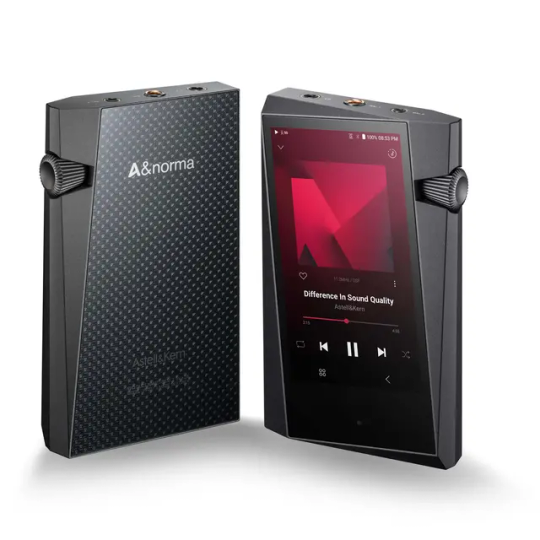
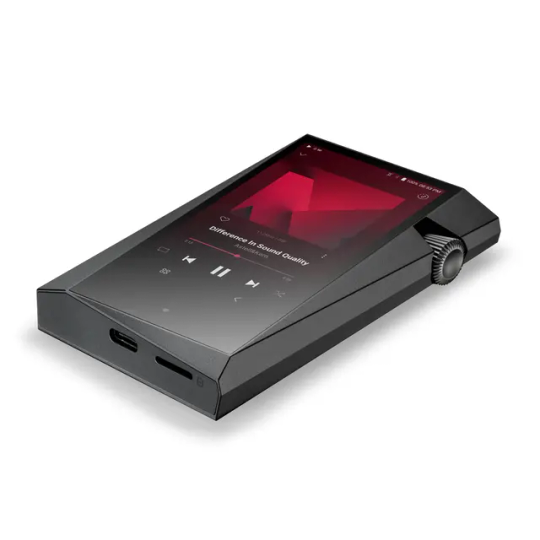
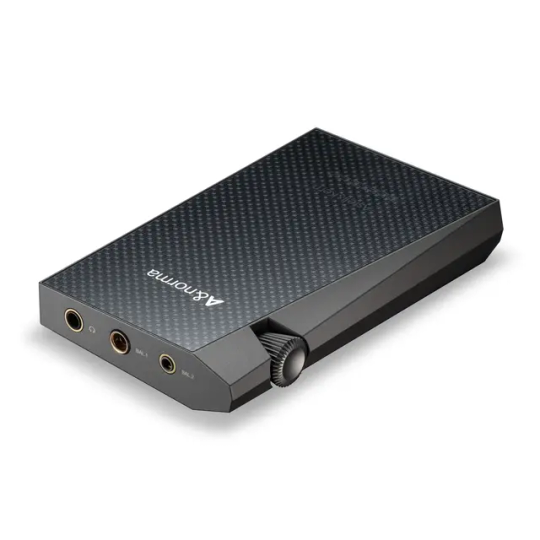


0 notes
Text
Are you looking for a HD Video Converter software that's extremely versatile? Look no further! This freebie includes MacX HD Video Converter Pro For Windows software that have so many great features. Not only can it be used to rip DVDs, it can also be used to convert and store wide variety of video formats ni HD quality. There are many other HD Video Converter softwares available on web. However, MacX HD Video Converter Pro For Windows software is a premium software that is being offered for free for limited time. This offer is exclusively brought for fromdev readers. This offer is valid for (5 lucky winners) only up to end of Sep 2015. This offer is for lifetime license for one PC (no upgrades to software). How To Enter Contest Follow the steps below to participate. 5 Licenses Of MacX HD Video Converter Pro For Windows About MacX HD Video Converter Pro For Windows There is no gainsaying that it would ruin the your good mood if certain videos cannot be played successfully in your media player or on mobile devices. The most likely reason lies in the video itself, for example, the video format, codecs or other parameters are incompatible with the player, video editing software or device. In this condition, it is advisable to try professional video converter tool to eliminate the problems. MacX HD Video Converter Pro for Windows will give you a helping hand to convert almost any kind of 4K ultra HD, HD and SD videos to the video format and size that you require. Besides offering sleek video quality to convert video on Windows computer(Windows 10 included), this video converter empowers you transfer the converted videos to mobile devices and watch them on the go on iPad Air, iPhone 6, Android phone, tablet etc. On top of that, you can also utilize this all-in-one software to download online videos or edit your video files like a pro. Cutting-edge HD Video Converter Supporting as many as 370 video and audio codecs, MacX HD Video Converter Pro for Windows versatile video converter is capable of converting videos in a plenty of formats, such as digital camera video format( MOD, TOD, TS/MTS/M2TS/AVCHD) , Blu-ray disc video format (M2TS and VOB files), standard DVDs ( MKV video), AVI, WMV, MP4, FLV, H.264/MPEG-4, DivX, Xvid, MOV and so on. Convert and Output Video Files for Portable Devices After importing the original video to the video converter software, you can select one specific profile for your portable device. Sit back and rest, then you can transfer the converted video for playback on smart phone, tablets etc, including Apple iPad, iPhone 6/6 Plus, Samsung Galaxy S5 mini/5/4, Surface Pro 3 and more. Download YouTube Video and Music A highlight of this video converter is the video downloading feature. It supports downloading 8K, 4K, 1080P, 720P videos and music from YouTube at fast speed for you to save them to computer for offline playback or convert YouTube videos to MOV, MP4 or AVI file later. Comes with Video Editing Feature This versatile video converter can also act as a basic and easy to use video editing tool that assist you to trim video length, crop unwanted areas of the video, merge multiple videos into one file, add watermark or subtitle etc.
0 notes